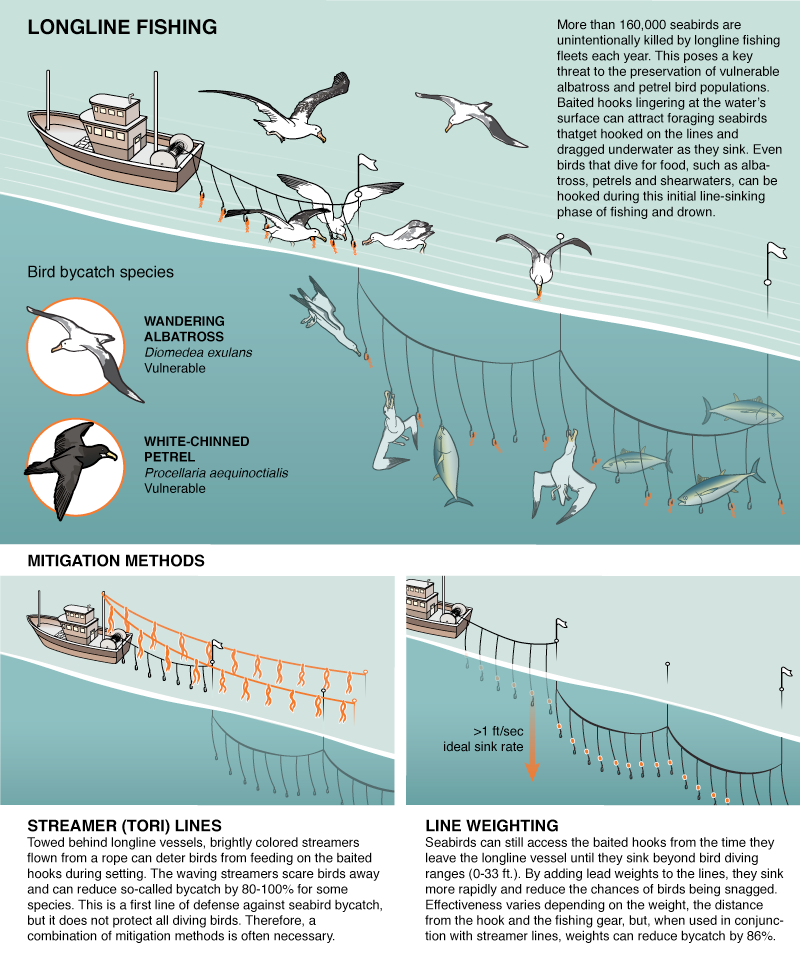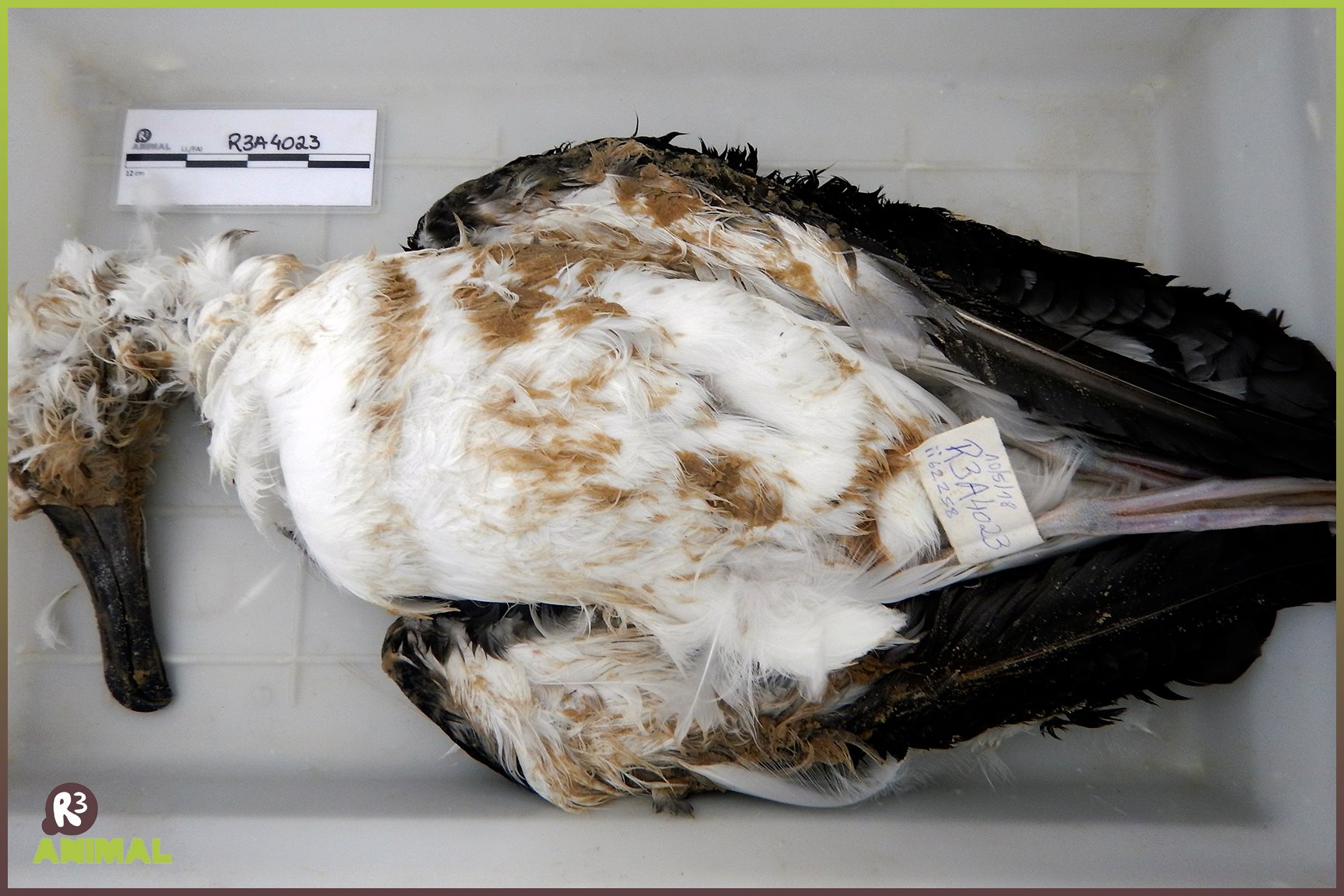Joanna Pierre (Johanna Pierre Environmental Consulting Ltd, Naenae, New Zealand) has produced a final report for the Conservation Services Programme of New Zealand’s Department of Conservation that recommends buoy deployments to reduce haul captures and improving fish waste management practices.
The report’s Executive Summary follows:
‘Seabird captures in longline fisheries may occur on the set, soak or haul. Bycatch reduction measures are best developed, tested and implemented for reducing seabird captures occurring during longline sets. Measures affecting the nature and extent of haul captures, and mitigation approaches to reduce those captures, are not well-known. Further, the difficulty of accurately identifying captures as occurring on the haul means that live seabird captures are typically used as a proxy for haul captures in bycatch datasets.
A global review shows four broad categories of mitigation used during longline hauling: physical barriers, measures that reduce the attractiveness of the haul area, deterrents, and operational approaches that are part of fishing. Of devices that operate as physical barriers to seabirds, bird exclusion devices, tori lines and towed buoys have been tested and proven effective in reducing seabird interactions with hauled longline gear. Discharging fish waste such that seabirds are not attracted to the hauling bay is another effective measure, and seabird abundance around vessels is reduced by retaining fish waste during hauling. While a number of deterrents and ad hoc or reactive approaches to reducing haul captures have been discussed in the literature, these have generally not been empirically tested.
Information collected by government fisheries observers on 73 bottom longline and 60 surface longline trips that have occurred since 1 October 2012 on New Zealand vessels < 34 m in overall length showed that most of these measures are in place here. However, implementation may be limited to a small number of vessels (e.g. one bottom longliner used a tori line and two surface longliners used a buoy to reduce seabird interactions with gear at hauling). Implementation may also not be consistent amongst vessels in a fleet, or on the same vessel between trips (e.g., for fish waste management, where some skippers retained all waste until after hauling or discharged when hooks were well below the sea surface, whilst others discharged used baits directly back into the hauling bay as the line was pulled in). This variation in practices creates consequent variation in haul capture risks. Further, the information already available on vessel operations in New Zealand is sufficient to enable actions to reduce haul capture risks.
Fisher and observer records returned from smaller-vessel New Zealand longline fisheries since 1 October 2009 show that 19 – 32% and 12 – 15% of seabird captures were live, and so likely to have occurred on the haul, for bottom and surface longline respectively. Reports of live-captured petrels and shearwaters were more common than albatross captures in datasets for bottom longline fisheries overall. However, these data are numerically dominated by captures reported from Fisheries Management Area (FMA) 1 (where no albatross captures were documented). Albatross captures were reported from bottom longline fisheries in other areas. Across the regions where surface longline fisheries occur, albatrosses dominate capture reports. In both fisher and observer datasets, and for both fishing methods, single live captures per trip were most common. This suggests that implementing reactive mitigation approaches after a live-capture event has occurred will not deliver the greatest possible reduction in haul captures.
Recommended next steps to progress haul mitigation work in smaller-vessel bottom longline fisheries include prioritising mitigation efforts in FMA 1, given the relatively large numbers of captures of high risk seabirds reported there. For surface longline fisheries, a fleet-level approach is recommended, given vessels are often mobile amongst FMAs due to the highly migratory nature of target fish species and relatively smaller number of vessels involved (less than 40). Mitigation efforts should include exploring device deployments (e.g. buoys) to reduce haul captures, and improving the quality and consistency of fish waste management practices that minimise capture risks during hauling. While sufficient information exists to progress mitigation approaches, recommendations are also provided for enhancing data collection to improve knowledge and understanding of the nature and extent of haul captures in New Zealand’s smaller-vessel longline fisheries.”

With thanks to Barry Baker.
Reference:
Pierre, J.P. 2018. Mitigating seabird captures during hauling on smaller longline vessels. [Naenae ]: JPEC Ltd. 49 pp.
John Cooper, ACAP Information Officer, 15 June 2018




 English
English  Français
Français  Español
Español 


